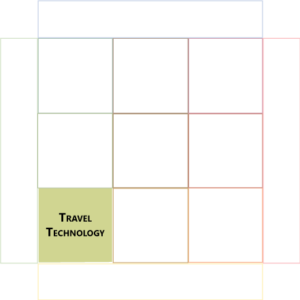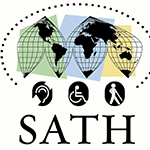
Boost your business performance and profitability by harnessing the power of strategic partnerships, dynamic pricing, and new product offerings.

Revenue Streams
12 Questions for Diversifying Profitability and Success
Key to Success
In this section, we would like to make sure that Small and Medium-sized Tourism Enterprises (SMTEs) should be aware of the following:
- Businesses and destinations can generate different revenue streams, such as direct sales, commissions, advertising, and partnerships.
- The importance of diversifying revenue streams to reduce risk and enhance business performance includes developing multiple revenue streams by offering new products and services, expanding into new markets, and developing strategic partnerships.
- The role of pricing and revenue management in optimizing revenue streams includes using pricing strategies, such as dynamic pricing and yield management, to maximize revenue and profitability.
Accomplishments
In this step, we’ll:
- Identify our business model to get revenue.
- Highlight our most vital income.
- Find different sources and mechanisms of revenue generation.
Time-Saving Tools
We’ll complete all sections of this chapter more quickly if we have any of the following handy:
- Our marketing plan and strategic plan.
- The tourism destination market plan and strategic plan.
- The trade travelers and other relevant stakeholders.
- Our Pricing Strategies.
- Our financial flow.
- Our full budget.
- All documents could be applied to find relevant information.
Presentation
Revenue streams are a critical component of their business model, referring to the sources of income that a business generates, such as a hotel room bookings, tour packages, or food and beverage sales. Therefore, effective management of revenue streams is essential for Small and Medium-sized Tourism Enterprises (SMTEs) to remain profitable and sustainable in the long term.
Here are some key things Small and Medium-sized Tourism Enterprises (SMTEs) should keep in mind about revenue streams:
- Diversification: Small and Medium-sized Tourism Enterprises (SMTEs) should diversify their revenue streams by offering a range of products and services catering to different traveler segments and needs. This can help to reduce reliance on a single revenue source and increase overall revenue.
- Pricing strategies: Small and Medium-sized Tourism Enterprises (SMTEs) should implement effective pricing strategies based on market demand, competition, and costs. This can help to optimize revenue and profitability while remaining competitive in the market.
- Traveler segmentation: Small and Medium-sized Tourism Enterprises (SMTEs) should segment their traveler base based on factors such as demographics, behavior, and preferences. This can help identify traveler needs and tailor products and services to meet those needs, increasing revenue and traveler satisfaction.
- Upselling and cross-selling: Small and Medium-sized Tourism Enterprises (SMTEs) should use upselling and cross-selling techniques to encourage travelers to purchase additional products and services. This can help to increase revenue per traveler and overall revenue.
- Partnerships and collaborations: Small and Medium-sized Tourism Enterprises (SMTEs) should consider partnering with other businesses or organizations to create new revenue streams or expand existing ones. This can help to reach new travelers, offer new products and services, and increase revenue.
Overall, effective management of revenue streams is critical for Small and Medium-sized Tourism Enterprises (SMTEs) to remain profitable and sustainable. By diversifying revenue sources, implementing effective pricing strategies, and tailoring products and services to traveler needs, Small and Medium-sized Tourism Enterprises (SMTEs) can increase revenue, improve traveler satisfaction, and stay competitive in the market.
GUIDING QUESTIONS
How can we promote responsible and sustainable practices throughout our revenue streams? Implementing eco-friendly initiatives and supporting local communities will contribute to small tourism enterprises' long-term success and reputation within our revenue streams.
YScala
A suggestion of guiding questions that are not intended to exhaust the topic:
- How do we generate revenue, and are there opportunities to diversify our revenue streams?
- What are the primary sources of revenue for our business? What will we charge for our value?
- What are our most popular products and services, and what are their profit margins?
- How many products and services will we sell with our revenue model?
- What are the different traveler segments we cater to? What products and services do they require?
- What is our pricing strategy? How do we determine the prices for our products or services, and how do they compare to competitors in the market?
- Are there any emerging trends or technologies that we can leverage to create new revenue streams?
- What are the partnership and collaboration opportunities to develop new revenue streams?
- Are there any untapped markets that we can target to generate additional revenue?
- What are the 20% of revenue streams that account for 80% of total business earnings?
- What value is each traveler segment genuinely willing to pay?
- How does our business generate income? How else could we generate revenue with what we have? How effectively do employees generate revenue?
These questions can help Small and Medium-sized Tourism Enterprises (SMTEs) to identify their current and potential revenue streams and develop strategies to optimize revenue and profitability. It is essential to regularly review and adapt revenue streams to changing market conditions, and traveler needs to stay competitive and sustainable.
Let your like and recommend this post to improve your audience!
Share this post with friends, colleagues, or anyone else who might be interested.
Comments:
We invite you to engage with our community, share your perspectives, and contribute to this meaningful conversation by commenting below. Your experiences and ideas can help others in their sustainable tourism development management journey.













